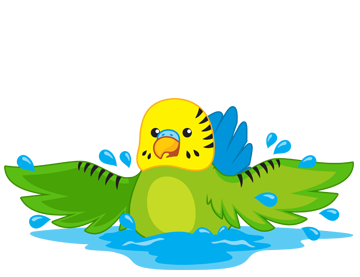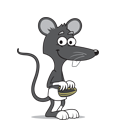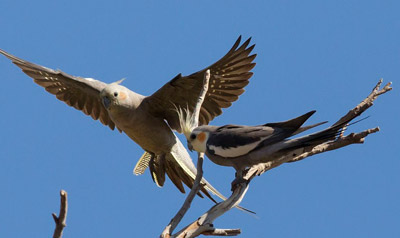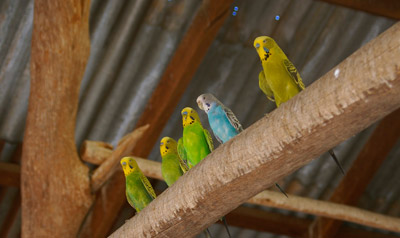Environment
All birds should live in a suitable environment. A bird’s home affects how the bird feels, thinks and behaves. Providing your birds with a large, safe, secure place to live that is sheltered from the weather is one way you can make sure that your birds stay healthy and happy.

Did you know that there is a special law protecting animals?
This law is called the Animal Welfare Act. The Animal Welfare Act outlines how people must take care of and act towards animals in New Zealand. The Ministry for Primary Industries (MPI), the Police and SPCA work together to make sure people in New Zealand follow these laws.
Under the Animal Welfare Act, all animal guardians (owners) are responsible for making sure the welfare needs of animals in their care are met. Learning about the Five Domains helps us to understand these welfare needs and how we can make sure we provide these. One of the Five Domains is Environment. In this section you will learn about this domain and how you can make sure your companion birds have the right environment, shelter, perches, etc. they need for positive welfare.





















.jpg) Birds in the wild fly over great distances, foraging for food and finding mates. Companion birds need to be able to fly around each day, in order to stay happy and healthy. The bigger the enclosure, the better! No space is too big for a creature adapted to flying through rainforests and across large oceans! Birds are happiest living in areas they have space to flap their wings and move around.
Birds in the wild fly over great distances, foraging for food and finding mates. Companion birds need to be able to fly around each day, in order to stay happy and healthy. The bigger the enclosure, the better! No space is too big for a creature adapted to flying through rainforests and across large oceans! Birds are happiest living in areas they have space to flap their wings and move around. There are lots of things to consider when deciding where your birds’ home should go. Before you even think about what type of birds you want, consider where you have space to put an aviary - would it go inside, or outside? This will help determine what type of birds may be suitable for your home.
There are lots of things to consider when deciding where your birds’ home should go. Before you even think about what type of birds you want, consider where you have space to put an aviary - would it go inside, or outside? This will help determine what type of birds may be suitable for your home. Companion birds are completely reliant on their owners to provide them with everything they need in their life. It’s up to you to check your birds’ environment every day and make sure they have everything they need, and that nothing in their environment can harm them.
Companion birds are completely reliant on their owners to provide them with everything they need in their life. It’s up to you to check your birds’ environment every day and make sure they have everything they need, and that nothing in their environment can harm them. Another thing to consider when housing your birds is the temperature. Birds generally do best in temperatures between 18°C and 27°C. If your birds’ environment is too hot or too cold for too long, they can become sick quite easily.
Another thing to consider when housing your birds is the temperature. Birds generally do best in temperatures between 18°C and 27°C. If your birds’ environment is too hot or too cold for too long, they can become sick quite easily. So now you know that you need a large aviary - but what type is best, and where do I find it? Consider whether you want to get an aviary custom made (perhaps by a friend, or a builder), or purchase one already made.
So now you know that you need a large aviary - but what type is best, and where do I find it? Consider whether you want to get an aviary custom made (perhaps by a friend, or a builder), or purchase one already made. Birds are prey animals - they need to hide from things that scare them. Providing sheltered areas up high allows them to do this, helping them feel safe.
Birds are prey animals - they need to hide from things that scare them. Providing sheltered areas up high allows them to do this, helping them feel safe. How often you clean your bird’s enclosure depends on many things. The enclosure size, number of birds and what you feed your bird all contribute to how fast your bird’s enclosure becomes dirty. Old food and a build-up of droppings can make your bird very ill, so it is vital to keep your bird’s environment clean and hygienic.
How often you clean your bird’s enclosure depends on many things. The enclosure size, number of birds and what you feed your bird all contribute to how fast your bird’s enclosure becomes dirty. Old food and a build-up of droppings can make your bird very ill, so it is vital to keep your bird’s environment clean and hygienic. If your family are going away, try to find someone to care for and meet all your birds’ welfare needs within their familiar home.
If your family are going away, try to find someone to care for and meet all your birds’ welfare needs within their familiar home.








